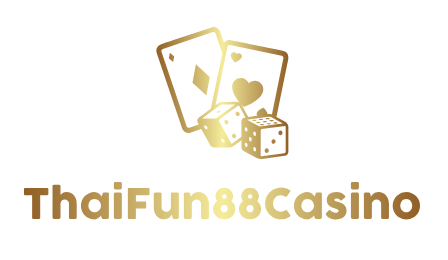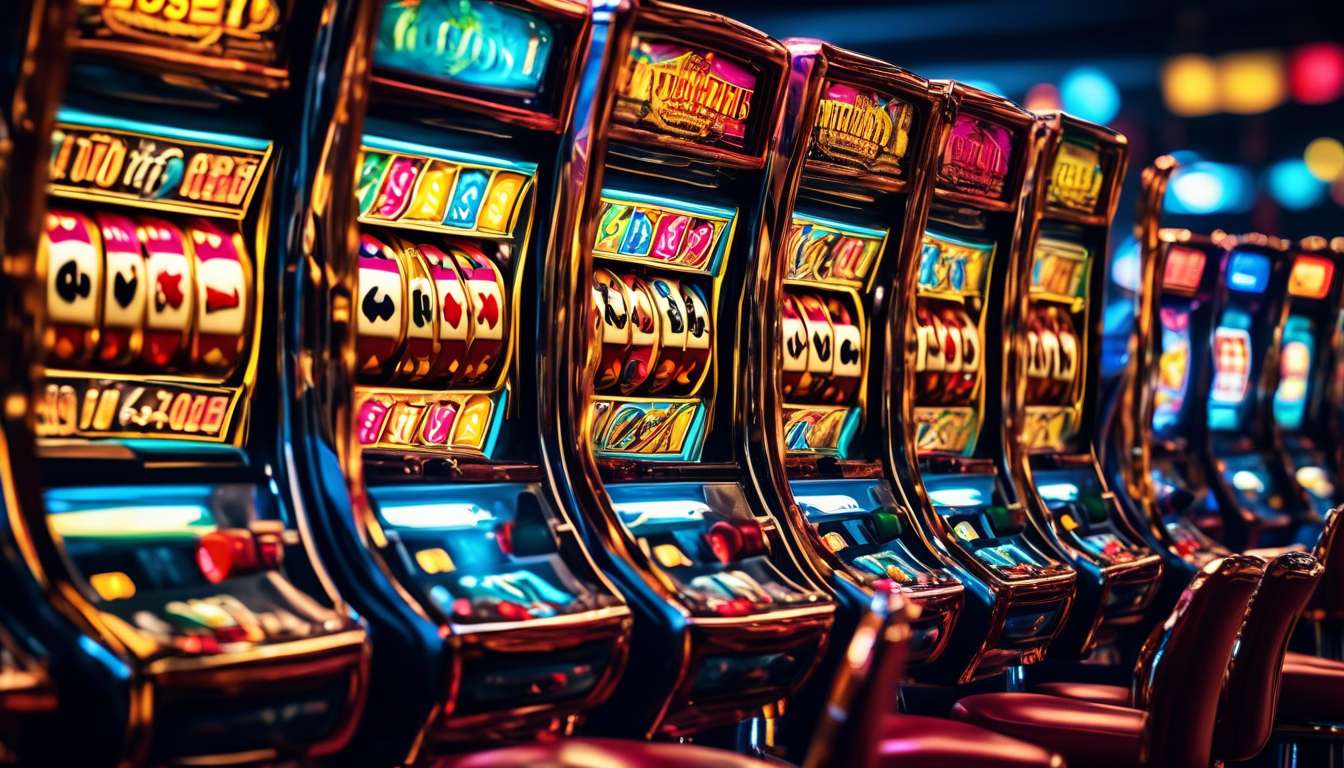Near Wins and Their Psychological Impact
As we stand before the mesmerizing glow of slot machines, we’re often entranced by the near wins—the moments when the symbols align tantalizingly close to a jackpot, only to fall just short. These "near misses" are more than mere coincidences; they are carefully crafted psychological tools designed to keep us engaged, hopeful, and reaching for the next spin.
Psychological Triggers and Human Behavior
Our fascination with these almost victories taps into deep-seated psychological triggers, blending the thrill of possibility with the sting of narrowly missed success. By understanding the allure of near misses, we can better comprehend why we keep playing and how these experiences shape our gambling habits.
Machine Design and Human Interaction
As we delve into the mechanics behind these machines and the psychology that fuels our persistence, we uncover a complex interplay between human behavior and machine design. The intricate world of slot machines and the subtle art of keeping us hooked reveals the following:
-
Design of Slot Machines
- Engineered to create near misses.
- Uses visuals and sounds to enhance engagement.
-
Psychological Effects
- Triggers dopamine release, similar to winning.
- Encourages continued play through perceived closeness to success.
-
Impact on Gambling Habits
- Promotes repeated play and increased spending.
- Exploits human tendencies towards optimism and perseverance.
By exploring these elements, we gain insight into the sophisticated strategies used to maintain player interest and the psychological techniques that influence our gambling behaviors.
Impact of Near Misses
Near misses on slot machines can significantly influence a player’s psychological state and behavior. When we experience a near miss, it feels like we were so close to winning, and that sensation can be both thrilling and frustrating.
As a community of players, we often find ourselves caught up in these moments, feeling an unspoken camaraderie. We share stories of “almost” victories, knowing that familiar rush all too well.
The role of near misses in player behavior is crucial:
- They create a sense of anticipation.
- They keep us engaged, making us believe that the next spin might just be the winning one.
Biochemical reactions also play a role. When we’re in that zone, our brains release dopamine, the neurotransmitter linked to pleasure and reward, even if we didn’t win.
This biochemical reaction fuels our desire to keep playing, binding us in a shared experience. We’re not just playing a game; we’re part of a collective journey, driven by those tantalizing near misses.
Role of Dopamine Release
The Role of Dopamine in Slot Machine Play
When we play slot machines, our brains release dopamine, making each spin feel rewarding and enticing. Dopamine, a chemical messenger, fuels our excitement and keeps us engaged, even when we experience near misses—those moments when the reels almost align perfectly.
Impact of Near Misses
These near misses trick us into thinking we’re close to a win, causing a surge of dopamine similar to an actual win. This effect is fascinating as it influences our behavior, making us want to keep going, thinking we’re just one spin away from hitting the jackpot.
Social Aspect of Slot Machine Play
- We gather together, sharing stories of almost wins.
- We feel connected in our shared pursuit.
- The dopamine rush creates a sense of anticipation and keeps us coming back for more.
Collective Experience and Behavior
As we explore these near misses, we see how dopamine plays a crucial role in shaping our actions at the slots. It’s not just about chasing wins; it’s about the thrill of being almost there together, bonding us through our collective experiences.
Connection to Human Optimism
Our innate human optimism compels us to keep spinning the reels, believing that a big win is just around the corner. It’s this hopeful spirit that slot machines cleverly tap into, especially when they present us with near misses. When those symbols almost line up, we feel a surge of excitement.
This isn’t just by chance. Near misses trigger a dopamine release in our brains, similar to what happens during a win, encouraging us to play on.
We all share this psychological quirk, which makes us feel like part of a community of hopeful players.
Deep down, we understand that a near miss is still a loss, yet our brains interpret it as a sign of potential success. This shared optimism shapes our player behavior as we keep trying, convinced our lucky break is within reach.
Together, we chase that thrill, driven by the belief that perseverance will eventually lead to triumph.
Influence on Player Behavior
Our attraction to near misses in slot machines significantly impacts how we engage with the game, often leading us to spend more time and money than initially intended.
Dopamine Release and Player Behavior
When we’re spinning the reels and see symbols aligning almost perfectly, our brains release dopamine, the neurotransmitter associated with pleasure and reward. This dopamine rush isn’t just a fleeting feeling; it reinforces our desire to play again, igniting a cycle that shapes our player behavior.
The Illusion of Imminent Victory
We find ourselves drawn back to the machines, experiencing a sense of belonging and excitement with each near miss, as if we’re part of an exclusive club of almost-winners. This sensation tricks us into thinking victory is just around the corner, encouraging us to chase that elusive win.
Shared Experience Among Players
Near misses create a unique bond among players, fostering a shared understanding of the thrill and frustration they bring.
Mindful Gaming
By acknowledging this influence, we can better understand our behaviors and make mindful choices in our gaming experiences.
Strategies for Player Engagement
To enhance player engagement, we can implement a variety of strategies that make the gaming experience more immersive and rewarding.
Incorporating Near Misses
By incorporating near misses into slot machines, we create moments that trigger dopamine release, making players feel they’re on the brink of winning. This sensation not only boosts excitement but also influences player behavior, encouraging them to continue playing.
Fostering a Sense of Community
As we design these experiences, it’s essential to foster a sense of community among players. We can introduce features like:
- Shared leaderboards
- Team-based challenges
These features promote interaction and camaraderie. By doing so, players feel connected and part of a larger group, enhancing their overall experience.
Offering Personalized Rewards
Moreover, offering personalized rewards and achievements can cater to individual preferences, keeping players engaged and motivated. When players see their progress and milestones, they’re likely to feel a stronger connection to the game.
Together, these strategies can create a dynamic environment that keeps players returning, eager to experience the thrill once more.
Illusion of Proximity to Jackpot
Many slot machines utilize visual and auditory cues to create an illusion that players are just a spin away from hitting the jackpot. We’ve all felt that rush when the symbols line up almost perfectly—a phenomenon known as Near Misses.
These moments aren’t accidental. They are designed to trigger the release of dopamine in our brains, a chemical that reinforces rewarding behaviors. When we experience Near Misses, our brains react similarly to winning, encouraging us to keep playing.
As a community of players:
- We’re aware that these Near Misses affect player behavior significantly.
- They create a sense of excitement and anticipation.
- They make us feel like part of an exclusive group on the verge of a big win.
This illusion of proximity to the jackpot fosters a shared experience among us, keeping us engaged and eager to continue. By understanding this, we can better navigate the emotional highs and lows of our gaming experiences together.
Interplay of Design and Psychology
The clever design of slot machines taps into our psychological tendencies, creating a captivating gaming experience that keeps us coming back for more. We find ourselves drawn to the allure of near misses, those almost-wins that spark excitement and anticipation.
When the reels align just shy of a jackpot, our brains flood with dopamine, the feel-good neurotransmitter that fuels our desire to play again. This carefully engineered experience isn’t just happenstance; it’s a deliberate strategy that influences player behavior.
As players, we’re united by the thrill of the chase, sharing in the collective hope of hitting that big win.
The near misses make us feel like we’re on the cusp of success, encouraging us to persevere. We’re not just spinning reels; we’re engaging in a shared experience where the design and psychology of slot machines intertwine.
Together, we navigate this complex landscape, where every near miss feels like a promise that keeps our spirits buoyed and our fingers itching to play.
Reinforcement of Gambling Tendencies
Slot machines cleverly reinforce our gambling tendencies by capitalizing on the thrill of near misses and the promise of potential rewards.
When we experience a near miss, our brains release dopamine, a neurotransmitter associated with pleasure and reward. This biochemical reaction encourages us to keep playing, as if we’re just one spin away from winning.
Near misses create a sense of almost belonging to the winner’s circle, making us feel like we’re part of an exclusive club that’s tantalizingly close to success.
Our player behavior is shaped by these psychological cues. We become more engaged, believing that the next attempt might be the one that changes everything. Casinos know this and design games to maximize these near misses, subtly guiding us into a cycle of anticipation and excitement.
By understanding the mechanics behind our actions, we’re better equipped to recognize when the thrill of the game is influencing our decisions. This awareness helps us maintain control over our gambling habits.
Conclusion
In conclusion, near misses on slot machines trigger dopamine release, which fuels player optimism and reinforces gambling behavior.
The illusion of proximity to the jackpot keeps players engaged, highlighting the powerful interplay of design and psychology in the gaming industry.
Understanding the psychology behind near misses can help both players and industry professionals in several ways:
- Navigate the complexities of gambling tendencies
- Promote responsible gaming practices
By being aware of these psychological triggers, individuals can make more informed decisions about their gaming habits.

